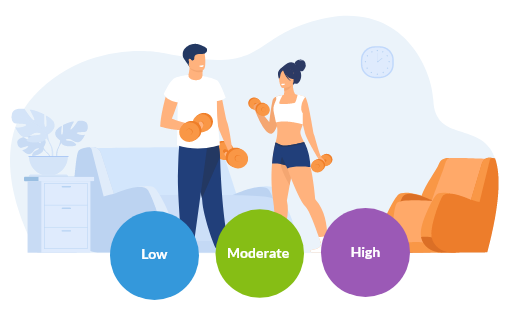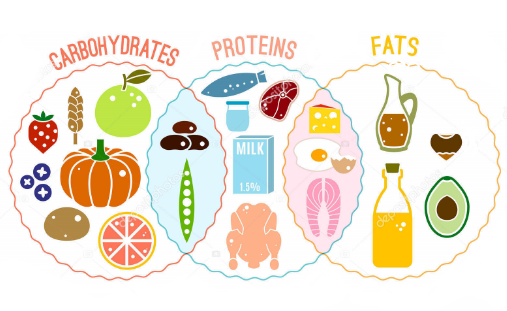Active Individuals

| 1 |
These are menu plans for lunch based on 5 - 6 meals per day for different categories of exercise intensity or physical activity level. Each menu will be presented in 3 intensities namely low, moderate, and high. Exercise intensity refers to how much energy is expended when exercising. Intensity is the amount of physical power (expressed as a percentage of the maximal oxygen consumption) that the body uses when performing an activity. |
| 2 |
The range of calories estimation for the three types of physical activity level (PAL)* related to exercise intensity for lunch menu are as below: |
| Moderately active (PAL - 1.6) | (400-599 kcal) Low Intensity Exercise |
| Active (PAL 1.8) | (600-699 kcal) Moderate Intensity Exercise |
| Very Active (PAL 2.0) | (700-899 kcal) High Intensity Exercise |
| Low intensity sports | Moderate intensity sports | High intensity sports |
|---|---|---|
|
Bowling
Archey
Yoga
Playing Golf
Rhythmic Gymnastics
|
Swimming
Martial Arts
Artistic Gymnastics
|
Marathon
Road Cycling
Tennis
Hockey
Football
Badminton
|
| 3 |
The intensity of exercise depends on the type of sports and duration of practice:
|
| 4 |
Please check your macronutrient requirements especially carbohydrate and protein before embarking any exercise menu diet plans in order to meet the energy requirements. The macronutrient needs also differ based on other factors such as type of training and gender. |


| 5 |
Please consult your sports nutritionist/dietitian for more specific dietary advice on daily energy intake and other dietary requirements. *NCCFN (National Coordinating Committee on Food and Nutrition)(2017). Recommended Nutrient Intakes. A report of the Technical Working Group On Nutritional Guidelines, Ministry of Health Malaysia, Putrajaya. *EFSA (2013). Scientific opinion on dietary reference values for energy. EFSA Panel on Dietetic Products, Nutrition and Allergies (NDA), European Food Safety Authority. EFSA Journal 11(1):3005. doi:10.2903/j.efsa.2013.3005 |
General Health Tips in Meal Preparation
Cook with low-fat methods such as baking, broiling, steaming, grilling or microwaving rather than frying in oil.
Increase the use of vegetables and/or fruits in meal preparation as recommended in the quarter-quarter-half (suku-suku-separuh) concept that emphasises on filling half of your plate with vegetables or fruits at lunch/dinner.
Use a little oil or spray oils instead of butter and stick margarine to minimise fat intake.
Use natural ingredients such as herbs, spices, lime or lemon juice, vinegar and pure umami seasonings to reduce your daily sodium intake.
Remove the skin of chicken and use lean meat by removing it fats before cooking it to reduce the amount of saturated fats.